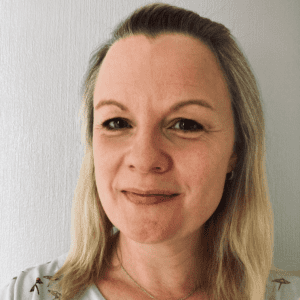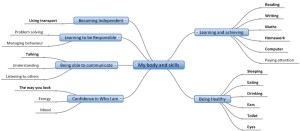In the first of a 2 part blog Larissa, our new Intern, introduces herself and our new Youth Justice Resource and gives information on a Talking Mats seminar at the end of April to mark the launch.
Hello!
My name is Larissa, I am a fourth year Psychology bachelors’ student at the university of Stirling and currently working on the launch of the Youth Justice Resource with Talking Mats as part of my work placement this year. Having enjoyed studying modules such as Language and the Brain and Developmental Psychology at university, I find the products Talking Mats have developed fascinating and love reading about in which ways the mats have helped people communicate in different situations.
I believe by adding the mats into any conversation -and especially around difficult or abstract topics- it can really open a two-way street of conversation. Instead of a person feeling they are being talked to, they are being asked to join the conversation, interact and show using the mats what they think. This can be beneficial for users who experience difficulty around communicating but also offer structure to any kind of conversation.
Especially in the context of Youth Justice I think this will be useful as having conversations about topics linked to a young person’s behaviour is fundamental to delivering appropriate and effective care. Conversations about difficulty in one’s personal life can be quite challenging. There are often delicate topics, the person might feel ashamed or find it hard to put into words what they have experienced or what they are feeling. This is where the use of Talking Mats can offer a less threatening way to broach a variety of topics and provide a structure to support conversation
The symbols in this set will help users communicate their experiences and how they feel about relationships, places and spaces and their experience with Youth Justice and was developed with a Youth Justice setting in mind. However, there is clearly a much wider use for this resource in any setting where understanding a person’s behaviour based on their experience and feelings is vital to determining the best form of support.
So, save the date! To celebrate the launch of this new set Talking Mats is having a web-seminar on the 28th of April 2022 at 9:30am after which the resource launches on the website. Come along to find out all about this new set, its uses and how it has helped Justice Practitioners so far. We would like to invite everyone who is interested to sign up on Eventbrite following this link:
Furthermore, please feel free to get in contact with us should you have any questions.
Manchester 30th June 2022.
It has been a long time since our Associates have been able to deliver training in a venue that is not virtual (to be accurate usually their kitchen / bedroom / garden shed). We are really pleased, therefore, to be able to let you all know that face to face training has returned! We know the convenience of online suits some people but many of you have been really missing the interaction, the energy and the discussion that occurs in a face to face training and we are looking forward to getting back to working with you in the same room.
It will be held in the St. Thomas Centre, Manchester on the 30th of June from 9.30am until 4.30pm. Find out more about what to expect on this course by following this link Manchester June 2022.
Talking Mats will take every step required to keep all participants and staff safe in this situation. Please let us know if there is anything we can do to support you to attend this course.

This course will be run by Laura Holmes, Lead Associate with responsibility for Foundation Training. She has been training with us since 2016. Here are her thoughts on resuming face to face training;‘I get so much out of face to face training; particpants form relationships quickly and really respond to each other and it creates a special learning environment.’
There are only 12 places on this course and we expect them to be taken up quickly.
To book please follow this link BOOK HERE.
Many thanks to Karen Mellon, NHS Fife Lead Podiatrist for Learning Disabilities and Care Homes, for this guest blog describing our exciting Fife Health Charity funded project, aimed at supporting patients with a learning disability (LD), or dementia, to be more involved in decisions around their care.
I was initially introduced to Talking Mats by my Learning Disability SLT colleagues who were using the resource to support patient engagement. I could see the real benefits of how it could support our interactions with patients with a LD or dementia and empower people to be more involved with decisions around their care. Our SLT colleagues had undertaken the Talking Mats Train the Trainer program and were then able to train our podiatrists in using the resource. Having used the existing resources we found that we weren’t able to discuss/explore people’s views deeply enough, for example, when they developed a foot ulceration, or were at risk of ulceration. This was the spark that ignited the idea to look at developing a specific foot care resource to enable these conversations.
The aim was to promote patient engagement in their care – both in preventative care and when specialised input is required. By creating the resource we aimed to explore what really mattered to the person and what for them were acceptable goals and outcomes. By developing a specific Talking Mats resource we were able to explore treatments options and impact of conditions and actively engage the person in expressing their views thus creating a person centred care plan. Evidence shows us when people are involved in decision making they are more satisfied with their care, which in turns improves their quality of life.
Having consulted with Talking Mats we jointly created an initial resource which we piloted within NHS Fife over a 6 week period. People living within care homes and people with a learning disability were the target audience for the pilot. Using the resource, we were able to understand more about the impact that foot ulceration was having on patients, and patient’s views on treatment options.
One example of this positive impact involves a 60 year old patient with learning disabilities and dementia. She lives independently with one hour support each day to assist with personal care. She has been known to podiatry for some time due to repeated ulceration. Specialist footwear has been supplied and regular input is in place to reduce the risk of re-occurrence, however at times the foot does break down.
In May the patient experienced a break down on her foot. She is a very pleasant lady who always comes across as if nothing bothers her and everything is fine; she doesn’t like to “cause a fuss”. It was felt the use of a Talking Mat might give us greater insight into the impact the wound was having.
As a result of completing the Talking Mat we were able to discover the patient was in fact experiencing difficulties with the type of dressing and was experiencing pain. We were able to address this and change the dressing type to an adhesive dressing, which took up less room in her shoe, and started her on Paracetamol 4 times a day to address her pain. Follow up discussions reveal the patient was much more satisfied with the dressing, it was more comfortable and easier to keep dry when showering. She also reported to be experiencing much less pain.
As a result of the mat, we were able to identify concerns she had, but didn’t want to share as she didn’t want to be a burden. We were able to address this and create a plan which was acceptable to the patient and improved her wellbeing.
I hope this resource will go on to benefit other professionals and carers working with people who may be impacted by their foot health. By using this resource, we can help our patients explore their views and wishes, therefore enabling co-production in care. The resource promotes preventative care as well as specialist intervention. Going forward there are many other areas of foot health that could potentially be explored in developing further resources – such as paediatrics, nail surgery, musculoskeletal.
Book your place on the Talking Mats and foot care training course on 24th January 2024 / 21st February 2024 being run jointly between ourselves and Karen Mellon . The price includes the resource .
To find out more about the work and projects supported by the Fife Health Charity follow their Social Media accounts at:
Facebook – @fifehealthcharity
Twitter – @FifeHealth
Talking Mats is delighted to announce that we have developed our own doggy Talking Mat to allow us to find out the views of our canine friends . Sally has been busy working on this as her swan song to Talking Mats . Sally has always been passionate about ensuring that pets are fully included in every Talking Mat. The Talking Mat for your dog launches on the 1st of April the day she starts her new job.
Good Luck to Sally in her new role as Head of Education , Research and Practice at Strathcarron Hospice -we know you will be as fab there as you have been here!
NB No dogs were harmed in the production of this resource.
We wanted to develop a tool that would give a holistic picture of how a child or young person feels about their lives at home at school and in their communities. We took into account the significant developmental changes that occur from 3 to 17 years and the influence of environmental and personal factors surrounding the child or young person.
We asked our artist to reflect the age and stage of the child in developing a symbol set for:
- Early years
- Primary and
- Secondary
The symbols are organised into three topics:
My Body and Skills: In this section you explore how the child is growing and developing by focussing on the functions of the body as well as skills that are emerging. You can gain an impression of how the child feels he or she is progressing physically, socially, cognitively and behaviourally.
What I do and my support: In this section you look at the child’s lived experience by asking about the activities they participate in, as well as how they feel about the support they receive.
My Wider world: The communities in which children grow up have a significant impact on the well-being of both children and families. In this section you look at the child’s wider world by exploring the impact of nursery or school as well as the support system available to them.
Talking Mats prompts you to cover the relevant topics for each age group you’re working with. You can help children and young people to see their personal strengths and abilities and take time to consider what their problem areas are.
The mind map below shows what is included in the Primary pack – What I do and my support.
If you want to read about how Talking Mats were used to help young people think about targets for their IEP read the 2012 research report.
If you would like the complete Consulting children and young people pack, covering Early years, Primary and Secondary then buy the silver resource which can be purchased either as an original or through a digital subscription.
 Online training login
Online training login 




